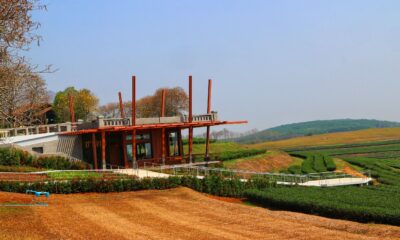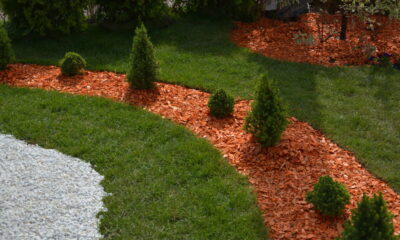

Features
Cool Farm Institute speak out on agricultural development
The occasional energy saving light bulb does, to some extent, deduct a fraction from your carbon toe print, but one of the biggest impacts on the Earth is left by agriculture. And with global consumption rising at a rate of knots, too, what are we going to do about it?
Last week, the Cool Farm Institute (CFI) was launched alongside partners Unilever, the University of Aberdeen and The Sustainable Food Lab, opening the gateway to a virtual farming world whereby producers in the food industry can witness their own environmental dent.
Using the Cool Farm Tool (CFT), farmers can have their greenhouse emissions projected before them and are provided tips on how they might lessen their environmental impacts.
Since its inception, the CFT has been successfully used by a number of market leaders, including PepsiCo, Marks and Spencer and Costco.
Following the launch of the innovative institute, Blue & Green Tomorrow spoke with members of the CFI management team and partner Unilever (which recently scooped its second sustainability trophy), to find out just how the institute proposes to revise the future of sustainable farming.
“The Tool has been piloted in over 20 crops and 22 countries around the world”, says Daniella Malin, project manager for the establishment of the CFI.
In the aspiration to universally administer the carbon calculator, the institute also envisions a growing “knowledge bank”, whereby a valuable network of farming industry specialists unite to provide an understanding of chain emissions management.
So, what is so ‘Cool’ about the Tool? Developed by Unilever and researchers at the University of Aberdeen, the unique programme allows user communities to ensure “continuous improvement”.
“The CFT is an excel spreadsheet”, explains Malin, “that allows farmers to input basic information – mostly off the top of their heads and then explore “what-if” scenarios for reducing greenhouse gas (GHG) emissions and/or sequencing carbon in the soil or above ground biomass.
“Two key things will help with this First; an online version of the tool is needed to ease data collection, data management, translation to other languages, adaptations of the generic core model to various crops and to provide an improved user experience.
“Second; a growing critical mass of partners are needed to promote standardisation, where possible, among sustainability initiatives, crops and regions.
“Goals for the first year are to establish the governance, the membership structure, business plan and to develop the software specification and initial web-based version of the software.”
“We have seen a progression in interest and seriousness. Companies have moved from learning about the issue, to strategizing, to taking action”
Malin also emphasised the importance of GHG management, a point which she feels is still greatly overlooked: “For the most part, the topic is still far from top of mind for growers who have their crop/livestock to think about, but we have seen progress.”

Cool Farm Tool For Potatoes
The CFT is simple enough to use. By downloading the inventive excel template, the global farming community can work with solid information on effective management of GHG emissions in agriculture.
Emma Keller, a sustainability research engineer with Unilever on the CFI management team, told us how the tool has already begun to change the face of GHG management: “Already we have had positive feedback from our own suppliers and are “learning by doing” along with peers who face similar challenges.
She adds, “At Unilever, we are working towards scaling up our deployment of the CFT within our supply chain.
“Moreover being part of the institute helps us to work jointly with our suppliers and growers on a journey for conscious improvement, using a robust and accepted decision support tool. This will help us to make progress on our sustainable sourcing and impact reduction ambitions and further build the strength of our brands.”
B> will continue to support sustainable initiatives in the search to prevent the effects of global warming. The CFI positions itself at the centre of future agricultural development and sets a leading-edge example.
Further reading:
































